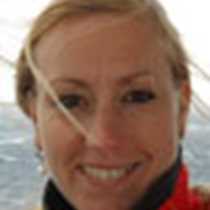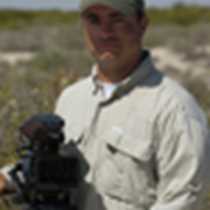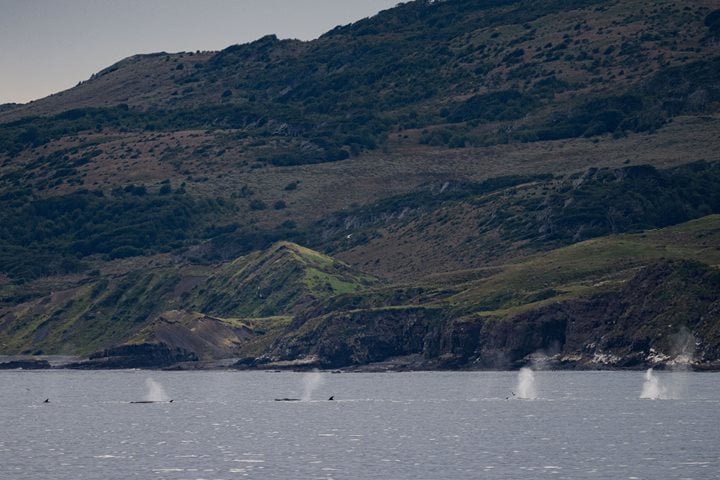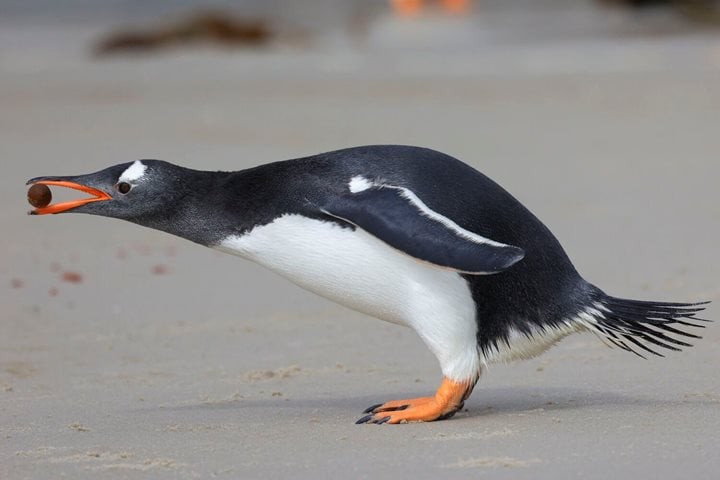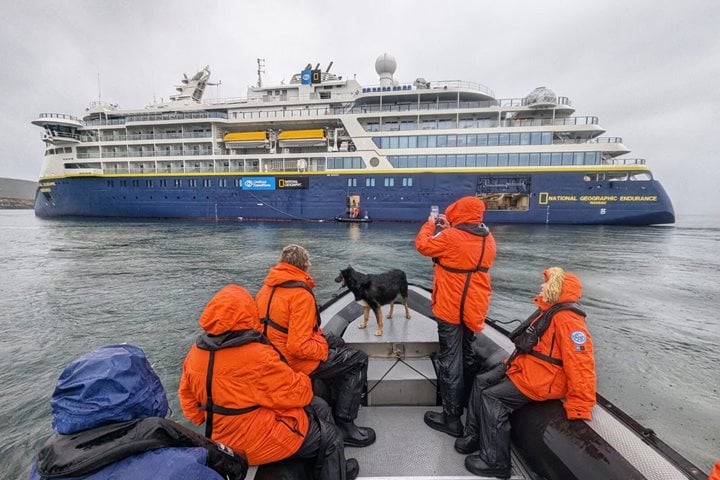This early morning at 4 a.m., while all of us were peacefully asleep, the soft and gentle voice of our expedition leader Shaun Powell awoke us with the announcement that the atmosphere and scenery outside was outstandingly beautiful—golden sunlight across the mountains and ice! He invited us out on deck to watch our captain navigate slowly towards the pack ice where we hoped to land before breakfast.
Within just 20 minutes most of us were dressed and geared up with cameras and binoculars on the outer decks to admire this magic morning here in Duse Bay. Nearly everyone was lost for words, as words just can’t describe the beauty of a place like Antarctica, especially on a morning like this. Before we knew it, we saw a minke whale along the pack ice and which at some point disappeared underneath the ice—what a sight! The captain moved step by step closer the ice edge, and with binoculars emperor penguins were sighted. At first their was some slight doubt, but as soon as we got closer it was obvious and also the emperor calls, so distinctive, gave it away. We sighted three emperor penguin chicks, possibly around five months old, resting by themselves in the bright sun. So many of us hoped to have a chance to see this iconic species of Antarctica but most of us also realised that the chances were quite small, as most emperor penguins are found in the interior of the continent. What a bonus, it felt like everything was just working out perfectly and it was not even 6 a.m. yet!
After a little while the captain parked the National Geographic Orion neatly in the pack ice, where we had the chance to observe the emperor penguins up close and personal. While all of us were enjoying the whole experience on the outer decks, Shaun and the scout party left the ship by Zodiac to check out potential landing spots on the ice, as some areas were a little slushy. Quite quickly that perfect spot was found and the PA announcement was made that we would Zodiac cruise along the ice edge before breakfast, and that we would have the chance to hike on the ice, and be able to go kayaking after breakfast. It was a great idea, as we hadn’t had that chance yet to explore the environment in our kayaks.
All set and done, we started with our Zodiac cruises and after breakfast everyone had the chance to hike and kayak. The sun was shining brightly all morning, making the temperatures very pleasant, pleasant enough to take jackets off while hiking to the top of an iceberg. Amazing 360-degree scenery; everywhere you looked it was just incredibly beautiful.
Until 11 a.m. everyone had the chance to soak it all up and if that was not enough of a day already, we decided to finish that off with a Polar Plunge! At 11:30 around 30 courageous people wanted to take that chance to jump in -1 degree Celsuis (30 degrees Fahrenheit) icy waters. Everyone not participating in the polar plunge was still very involved and supported our fellow travellers. What a fun event and a great way to finish off our morning here in Duse Bay. Some hot chocolate and whiskey was handed out by our lovely bar team to warm up the plungers. It was a great success!
After lunch most of us had a nap, as we had been up since 4:00 a.m. already. But at 1500 most of us were back in the lounge to listen to our National Geographic photographer Dan, who taught us how to tell a story with photography.
At 1700 our naturalist Doug Gould shared some great and fun stories about his experience at Bailey Head counting penguins and some of the funny characteristics of the chinstraps and Adelie Penguins. Plenty of loud laughs filled the lounge.
While sailing further east, the scenery stayed spectacular with plenty of tabular icebergs and some seal and penguin sightings. Many of us stepped outside regularly to take in the beautiful scenery.
At 1800 we all met back in the lounge for our usual recap and briefing with the expedition team followed by a sumptuous dinner in the dining room. The dining room was filled with chatter and laughter, so much to share with each other and to toast to a fantastic day here in the Antarctic Peninsula.



